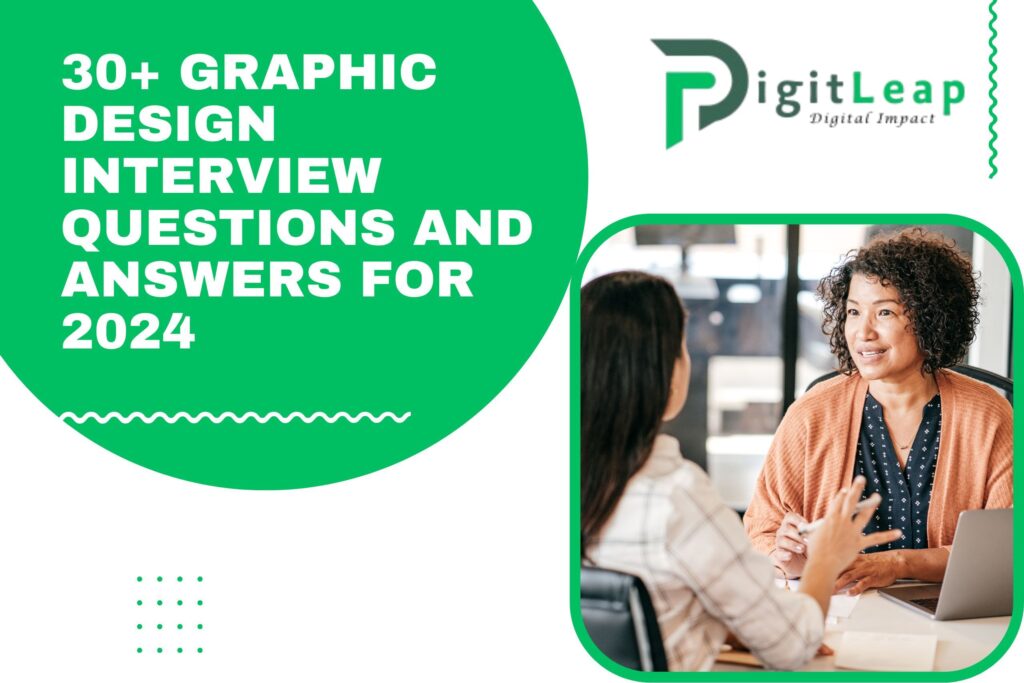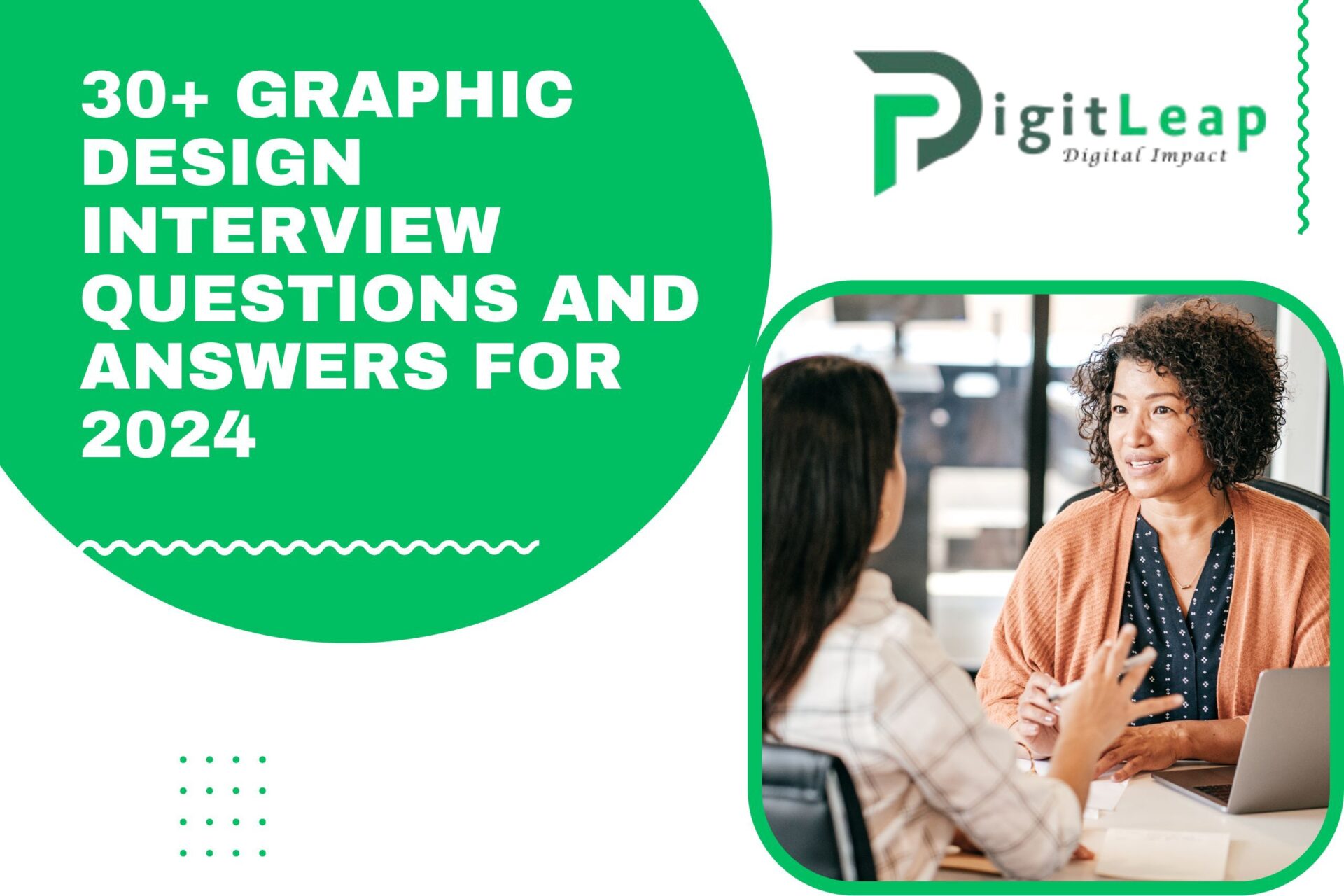30+ Graphic Design Interview Questions and Answers for 2025
As the world of graphic design continues to evolve, creative professionals need to stay updated with the latest trends, tools, and techniques. Whether you’re a seasoned designer or just starting your career, preparing for an interview in 2025 means being ready to discuss both your creative process and technical skills. Below is a humanized list of over 30 questions along with sample answers to help you shine in your next graphic design interview.

General Background and Experience
- Can you tell us about your background in graphic design?
Answer: I started my journey in graphic design about eight years ago, initially working with small local agencies before moving on to freelance projects. I have a strong foundation in visual communication, and I love blending creative ideas with practical design solutions. - What inspired you to pursue a career in graphic design?
Answer: I’ve always been fascinated by the power of visuals to tell stories. From a young age, I enjoyed sketching and experimenting with colors, and as I grew older, I realized that graphic design allowed me to combine my artistic side with technology to create compelling visuals. - How do you keep your skills updated in a constantly changing field?
Answer: I follow industry blogs, attend webinars and conferences, and take online courses on platforms like Skillshare and Coursera. I also make it a point to experiment with new design software and tools in my personal projects.
Creative Process and Tools
- What is your design process from start to finish?
Answer: My process begins with understanding the client’s needs and brainstorming ideas. I sketch initial concepts, then create digital drafts using tools like Adobe Illustrator and Photoshop. After receiving feedback, I refine the designs until we achieve the perfect final product. - Which design tools do you use daily?
Answer: I primarily use Adobe Creative Cloud (Illustrator, Photoshop, and InDesign). I also work with Figma for collaborative projects and occasionally use Procreate for quick sketches and illustrations. - How do you approach a new design project?
Answer: I start by researching the industry and target audience. Then, I gather inspiration from various sources and create mood boards. This helps me develop a visual direction that aligns with the client’s vision before I start drafting designs. - How do you handle creative blocks?
Answer: When I hit a creative block, I step away from the project for a bit—sometimes taking a walk or engaging in a different creative activity. This break often helps me return with fresh ideas and a new perspective.
Design Principles and Techniques
- What design principles do you consider most important?
Answer: I believe in the importance of balance, contrast, alignment, repetition, and white space. These principles help create clear and effective designs that communicate the intended message. - How do you ensure that your designs are accessible?
Answer: I focus on using high-contrast color schemes, clear typography, and accessible layouts. I also follow WCAG guidelines to ensure that my designs cater to a diverse audience, including those with disabilities. - Can you explain the role of typography in your designs?
Answer: Typography is crucial as it sets the tone and readability of a design. I carefully select fonts that match the brand personality and ensure that the text is legible across all devices and sizes. - How do you approach color selection for a project?
Answer: I consider the brand’s identity, target audience, and the psychological effects of colors. I use tools like Adobe Color to explore harmonious palettes and test them within my designs to ensure they evoke the desired emotions.
Industry Trends and Innovation
- What trends in graphic design are you most excited about for 2025?
Answer: I’m excited about the integration of augmented reality in design, the rise of minimalistic aesthetics, and the growing importance of sustainable design practices. These trends push creativity while considering practical and ethical implications. - How do you see the role of AI in graphic design evolving?
Answer: AI is becoming a valuable tool for automating repetitive tasks, generating creative ideas, and even predicting design trends. I see it as a complementary resource that enhances the designer’s creative process rather than replacing it. - What impact does digital transformation have on your work?
Answer: Digital transformation has opened up new avenues for creativity and collaboration. It allows for real-time feedback and collaboration with clients and teams, making the design process more efficient and dynamic.
Client Communication and Project Management
- How do you manage client feedback during a project?
Answer: I listen carefully, ask clarifying questions, and ensure I understand their vision. I use feedback to refine my designs and always communicate my rationale behind design choices to maintain transparency. - What steps do you take to meet tight deadlines?
Answer: I prioritize tasks, use project management tools like Trello, and set clear milestones. Staying organized and breaking the project into smaller, manageable parts helps me deliver quality work on time. - How do you handle revisions if a client isn’t satisfied with your work?
Answer: I view revisions as an opportunity to better align with the client’s vision. I work collaboratively to understand their concerns and make targeted adjustments until the design meets their expectations.
Technical Skills and Portfolio
- Can you describe a project from your portfolio that best represents your skills?
Answer: One of my favorite projects involved designing a complete branding package for a startup. I developed everything from the logo to the website layout, focusing on creating a cohesive visual identity that resonated with the target audience. The project allowed me to showcase my skills in typography, color theory, and digital illustration. - How do you ensure your portfolio is up-to-date and reflective of your best work?
Answer: I regularly update my portfolio with new projects and remove outdated work. I also make sure to include a variety of projects that demonstrate my versatility and expertise across different design disciplines. - What is your experience with web design and user interface (UI) design?
Answer: I have extensive experience designing websites and user interfaces that are both visually appealing and user-friendly. My focus is on creating intuitive designs that enhance the user experience while staying true to the brand’s identity.
Soft Skills and Professional Growth
- How do you handle creative criticism?
Answer: I welcome creative criticism as it helps me grow. I listen actively, consider the feedback objectively, and use it to improve my work. Constructive criticism is essential for evolving as a designer. - What motivates you as a graphic designer?
Answer: I’m driven by the opportunity to solve visual problems and tell compelling stories through design. The chance to make a positive impact on a brand’s identity and connect with audiences is incredibly rewarding. - How do you collaborate with other departments, such as marketing or development?
Answer: I believe clear communication and teamwork are key. I work closely with marketing teams to ensure our designs align with campaign goals, and I collaborate with developers to ensure that designs are implemented accurately and efficiently. - How do you stay inspired and keep your creativity flowing?
Answer: I regularly explore design blogs, attend industry events, and experiment with new techniques in personal projects. Stepping away from work for creative brainstorming sessions often sparks fresh ideas. - What trends in graphic design do you think will shape the industry in the coming years?
Answer: Minimalism, sustainable design practices, and the increased use of interactive and animated elements are trends I expect to gain momentum. These trends not only focus on aesthetics but also on delivering meaningful and engaging user experiences.
Additional Questions
- How do you balance creativity with meeting client requirements?
Answer: I start by deeply understanding the client’s vision and objectives. Then, I blend creative ideas with practical solutions to create designs that are both innovative and aligned with their brand. - What is your approach to typography in your designs?
Answer: Typography is a vital aspect of design. I carefully select fonts that complement the overall aesthetic and enhance readability, ensuring that the text conveys the intended message clearly and effectively. - How do you manage multiple projects at once?
Answer: I prioritize tasks using project management tools and maintain a detailed schedule. Breaking projects into smaller tasks and setting deadlines helps me stay organized and meet client expectations. - How do you ensure the designs you create are both innovative and functional?
Answer: I focus on user experience by balancing aesthetics with usability. Continuous testing and feedback ensure that the design is not only visually appealing but also practical for end-users. - How do you incorporate feedback into your design process?
Answer: I view feedback as a critical part of the design process. I gather insights from clients and peers, reflect on the suggestions, and integrate them into my revisions to improve the final product. - What are your future goals as a graphic designer?
Answer: I aim to continuously expand my skill set, explore emerging design technologies, and create work that not only meets client needs but also pushes creative boundaries.
Conclusion
These 31+ questions and answers provide a glimpse into what you might expect in a graphic design interview in 2025. From technical skills to creative processes and soft skills, being well-prepared with thoughtful, genuine responses will help you stand out. Remember, authenticity and continuous learning are key to thriving in the dynamic world of graphic design.






